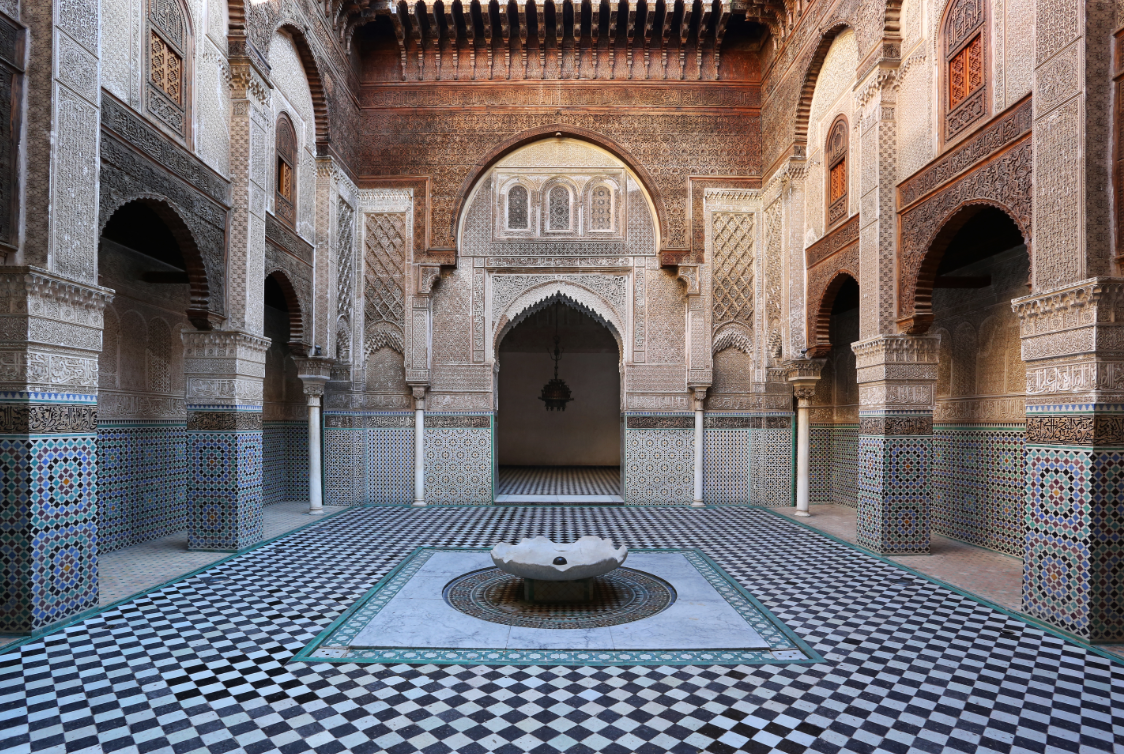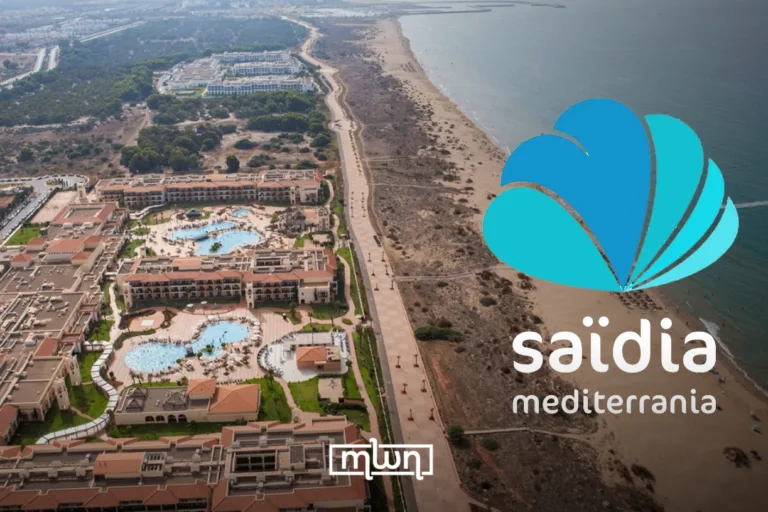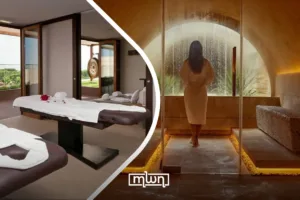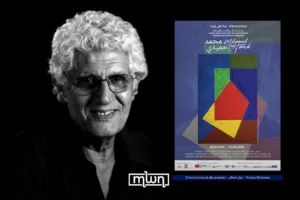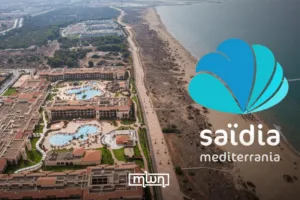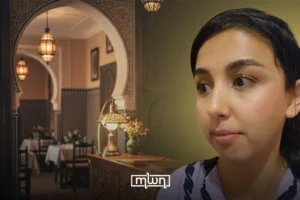The Fez-Meknes region, located in the northern part of the Kingdom of Morocco, encompasses several cities, including the two imperial cities of Fez and Meknes. With a population of 4.2 million people, the region ranks as the fourth most populated region in Morocco.
The region stands as a living testament to the passage of time and a beacon that illuminates the pages of history. Boasting around 35% of Morocco’s historic monuments, the region is a unique and must-see destination for Moroccan and foreign tourists alike.
The region offers a wide range of activities that pave the way for different types of tourism, mainly cultural and heritage tourism. In 2019, the region accumulated MAD 349 million (nearly $34 million) from the tourism sector, which reflects the region’s status as a popular destination for tourists.
Fez
Fez was founded by the Idrisid dynasty in 789 AD; the city went on to become the capital for the Marinid dynasty between the 13th and 15th centuries, which is a period that many refer to as the city’s golden age. Though the city did not remain the capital of the country, it remains its undoubted center of culture, heritage, and history.
The city is made up of two parts: Fez el-Bali and Fez Jedid. Fez el-Bali is the original city, which is home to the old medina, while Fez Jedid was established in 1276 and houses the royal palace, the army’s command center, and residential areas.
Read Also: Tripadvisor Ranks Fez as 4th Best Cultural Destination for Tourism in 2024
Fez’s old Medina was the first Moroccan Medina to be registered as a UNESCO World Heritage Site in 1981. The various mosques, buildings and schools in the medina, from the city’s golden age, represent the living history not only of Fez or the entire region but of Morocco as a whole.
With its ancient architecture, cobblestone streets, and museums filled with relics of the past, wandering through the alleys and streets of the city feels like stepping into a time machine that gives you a glimpse of what Fez was like during its golden age. 
The Fez medina, Morocco
The medina of the 12-century-old city is the crown jewel of the region. With over 10.000 alleys and a 30km pedestrian zone, the old medina qualifies as the largest medina in Morocco and one of the most renowned old medinas in the Arab World.
One of the major Islamic metropolises throughout much of the Middle Ages, the medina of Fez is home to a wide range of architectural styles, characterized by building methods and ornamentation developed over ten centuries, and by the integration of local skills and knowledge with Andalusian, Middle Eastern, and African inspiration.
Walking through the tight alleys of the old medina, tourists and locals are captivated by the beauty of the traditional clothes, the beautifully engraved copperware and ironwork, the various designs of pottery, and the handcrafted rugs, which hold the history of the city within their threads and leather goods.
Many of the shops and the secrets of the craft are passed down from generation to generation, which is another component that contributes to the living history of Fez. While people change, the famous Chouara Tannery and other tanneries and shops from that era are still the same.
The breathtaking Fez landscape
Within the walls of the old medina lies a treasure of immense historical importance—the University of al-Qarawiyyin, renowned as the oldest university in the world. Its origins trace back to the 9th century, when it was initially constructed as a mosque by Fatima al-Fihriya. With its vibrant green rooftop, elegant mosaic work, beautiful carved wooden ceilings, and colorful zellij, this architectural masterpiece stands as a testament to the city’s rich history.
Stepping inside the mosque nowadays is similar to taking a journey centuries back in time. Al-Qarawiyyin stands as the spiritual, religious and academic heart of the city, having witnessed the evolution of the city throughout the ages. If you look closely into the cracks in its walls and the bolts in its doors, you get to see the story of Fez through time.
For a more relaxed and calm experience, Fez offers its gardens, especially Jnan Sbil Gardens. Established in the 18th century, these gardens were originally reserved exclusively for the royal family. However, in 1917, they were opened to the public, inviting visitors to enjoy the gardens’ beauty and history.
Through thick green bushes, colorful flowers, the sweet melody of bird songs, and a lively pond, the gardens provide serenity and tranquility for their visitors and an escape from the busy life of the medina.
Meknes
Meknes was established in the 11th century by the Almoravid dynasty, just a few kilometers west of Fez. The city has a rich history and is another precious treasure that the Fes-Meknes region has to offer its visitors. Like Fez, Meknes is an imperial city. The Alaouite dynasty made the city their capital in the 17th century until the death of Sultan Moulay Ismail in 1727.
Meknes is an enchanting city where you can walk around and enjoy the amazing architecture of mosques, monuments, museums and gardens — an experience that history lovers would describe as a once in a lifetime experience.
Due to the variety of fruits and vegetables it produces, the city is considered the agricultural capital of Morocco. Meknes enjoys a geographical position on top of one of Morocco’s fertile areas – the Saiss plain.
The old medina of Meknes is one of the UNESCO World Heritage Sites listed in 1996 The medina is surrounded by 15-meter-high ramparts, and within the enclosed old city are kasbahs, museums, mosques, and other monuments that reveal to visitors the history of Meknes over time.
Among the museums in Meknes that preserve pieces of the city’s history is the Dar Jamai Museum for Moroccan Art. Initially built as a house for the Jamai family, it was then transformed into a museum in 1920. What makes this museum special is the preserved traditional decor of the painted wood and sculpted plaster.
Bab Mansur, said to be the last monument built by Moulay Ismail, is considered an architectural marvel due to its size and height. The 16-meter-high door stands as a warm welcome to visitors and is admittedly one of the most elegant and beautiful doors in Morocco and in the MENA region.
Lahdim Square, near Bab Mansur, considered to be the largest square in the city, has different shops specializing in different traditional crafts. The square seems to stop time for its visitors and allow them to truly acknowledge and enjoy the beauty of the traditional goods.
The secrets to the crafts are passed down from father to son, which allows the history of Meknes to live on through monuments, landmarks, and traditional goods from bracelets and pottery to embroidery and painted ceramics.
Meknes’ rich history can be found in every corner, crevice, tile and wall of the city, all of which makes this imperial city the perfect destination for people who want to appreciate the rich history of the region and of Morocco. Meknes is one of the most popular tourist destinations in the region because of the uniquely enchanting opportunity it offers visitors to stroll through the alleys of the old medina, visit the kasbahs, enjoy the serenity of the mosques or immerse themselves in the past in the city’s various museums.
Another testament to Meknes and the region’s rich history is Volubilis. The site was home to many civilizations since the 3rd century B.C, from being the capital of Mauritania, an ancient kingdom at that time, to becoming a major outpost under Roman rule. With its Roman ruins, Volubilis was listed as a UNESCO World Heritage Site in 1997.
Since then, Volubilis has been endowed with numerous beautiful structures. On the archaeological site there are still numerous remains of these buildings. Due to the fact that it has not been inhabited for almost a thousand years, the site offers authenticity and a perfectly preserved history of the region which can be seen in the Roman ruins.
Ifrane
Ifrane is a highly sought-after destination for both Moroccans and tourists all year round. Whether it is to enjoy the breathtaking snow-covered scenery in winter or escape the sweltering summer heat, Ifrane offers a refreshing escape. Built in the late 1920s as a garden city, it was designed to provide refuge from extreme temperatures. In fact, Ifrane boasts the distinction of holding the record for the lowest temperatures ever recorded in Africa.
The city stands as an escape from the hustle and bustle of other cities in the region and offers its visitors a place to let go of their worries and problems. Although the city is renowned for its tranquility and serenity that attract people from all over, its history is rich and vibrant. Just like Volubilis, Ifrane was home to several civilizations throughout the ages, including Arabs, Romans and Jews, as it was the capital of a Jewish kingdom in 500 BC.
The city earned its status as an important stop for caravans traveling from the Sahara Desert to the port of Mogador at present-day Essaouira on the Atlantic coast, transporting goods including amber, ostrich feathers, gold, and other riches. The ruins of the mellah of Ifrane, the caravan port, still stand today and can be visited, along with the Jewish cemetery with its nearly 2000-year-old tombs, to get a sense of what Ifrane looked like centuries ago.
Ifrane’s popularity reaches its peak during winter, when the city is all covered in snow. Ski enthusiasts from all over Morocco and even the world visit the slopes of Michlifen, just 20 kilometers from Ifrane. All in all, Ifrane is another must-see destination in the region.
Taza
Founded in the 7th century by local tribes, Taza has a rich history shaped by various Moroccan dynasties. Similar in structure to Fez, Taza consists of two distinct areas: an ancient city fortified with towering walls and formidable gates. These fortifications earned Taza its reputation for resisting the Ottoman conquest of Morocco, demonstrating the city’s historical significance.
Taza’s monuments and landmarks hold rich historical narratives, with the Great Mosque of Taza standing as a testament to the region’s heritage, dating back to the 12th century. This magnificent mosque showcases the remarkable architectural styles of both the Almohade and the Marinid dynasties. Its exterior features a simple yet elegant design, while the interior boasts intricate details, including breathtaking mosaics, elaborately carved and decorated woodwork, and a stunning bronze chandelier that dates back to the days of the Marinid dynasty.
Similar to the other old medinas in the region, the old medina of Taza contains shops that sell traditional objects such as jewelry, tapestries, and other goods made with the craftsmanship that has been passed down from generation to generation since the founding of the city of Taza.
Other sites worth visiting in Taza are its caves, namely the over 7 kilometers long Chara Cave. Fossils found in these caves suggest that they were inhabited during the Paleolithic period, which is another testimony to the rich history that Taza enjoys.
The Fez-Meknes Region is filled with living history; it is a place where history unfolds around every corner, in every crevice and crack, and amidst the standing monuments. This region has preserved almost the entire history of Morocco within its territory, making it an important, must-visit destination for those who are passionate about the history not only of the region, but also of Morocco and North Africa as a whole.

